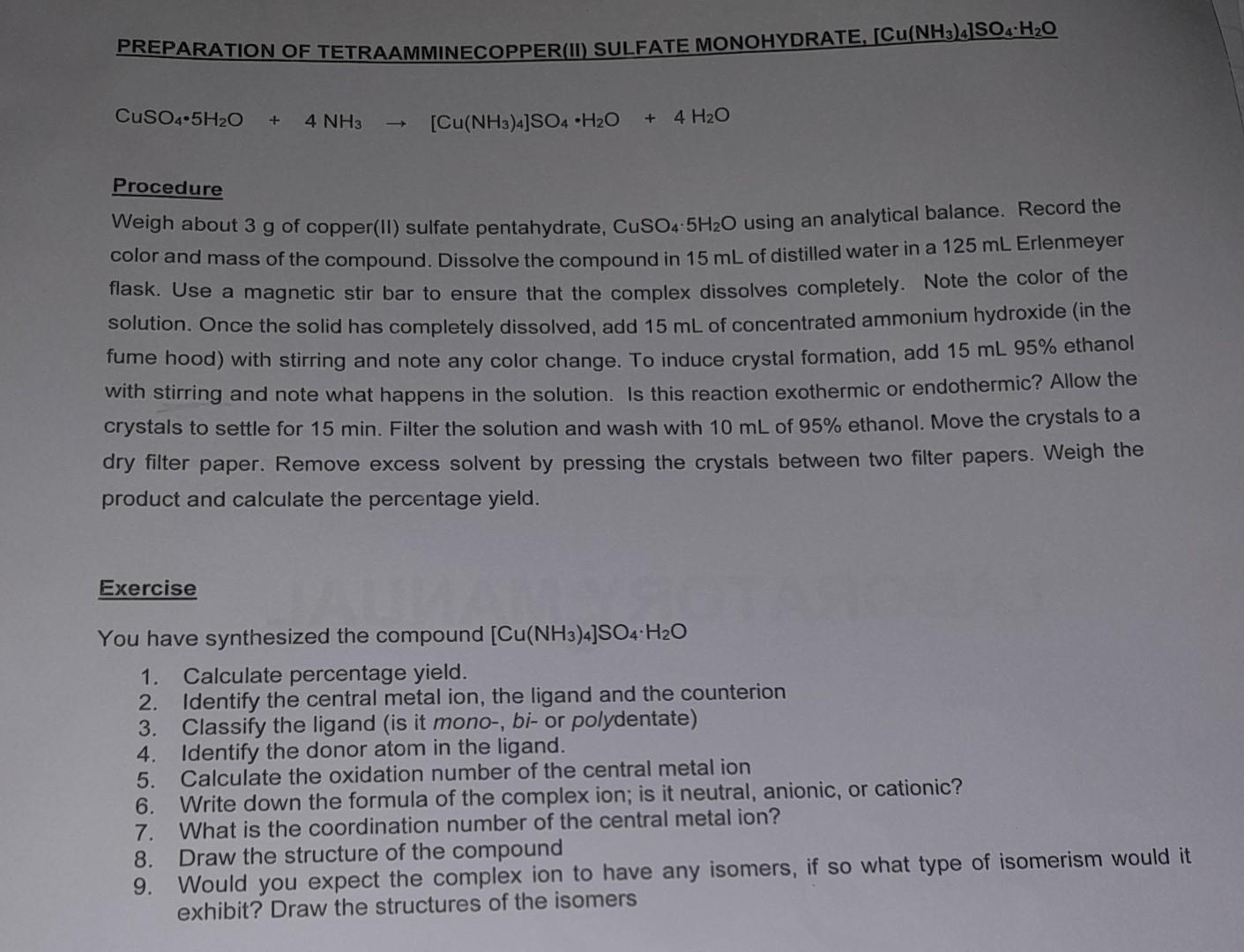Answered step by step
Verified Expert Solution
Question
1 Approved Answer
PREPARATION OF TETRAAMIMINECOPPER(II) SULFATE MONOHYDRATE, [Cu(NH3)4]SO4H2O CuSO45H2O+4NH3[Cu(NH3)4]SO4H2O+4H2O Procedure Weigh about 3g of copper(II) sulfate pentahydrate, CuSO45H2O using an analytical balance. Record the color and mass

PREPARATION OF TETRAAMIMINECOPPER(II) SULFATE MONOHYDRATE, [Cu(NH3)4]SO4H2O CuSO45H2O+4NH3[Cu(NH3)4]SO4H2O+4H2O Procedure Weigh about 3g of copper(II) sulfate pentahydrate, CuSO45H2O using an analytical balance. Record the color and mass of the compound. Dissolve the compound in 15mL of distilled water in a 125mL Erlenmeyer flask. Use a magnetic stir bar to ensure that the complex dissolves completely. Note the color of the solution. Once the solid has completely dissolved, add 15mL of concentrated ammonium hydroxide (in the fume hood) with stirring and note any color change. To induce crystal formation, add 15mL95% ethanol with stirring and note what happens in the solution. Is this reaction exothermic or endothermic? Allow the crystals to settle for 15min. Filter the solution and wash with 10mL of 95% ethanol. Move the crystals to a dry filter paper. Remove excess solvent by pressing the crystals between two filter papers. Weigh the product and calculate the percentage yield. Exercise You have synthesized the compound [Cu(NH3)4]SO4H2O 1. Calculate percentage yield. 2. Identify the central metal ion, the ligand and the counterion 3. Classify the ligand (is it mono-, bi- or polydentate) 4. Identify the donor atom in the ligand. 5. Calculate the oxidation number of the central metal ion 6. Write down the formula of the complex ion; is it neutral, anionic, or cationic? 7. What is the coordination number of the central metal ion? 8. Draw the structure of the compound 9. Would you expect the complex ion to have any isomers, if so what type of isomerism would it exhibit? Draw the structures of the isomers
Step by Step Solution
There are 3 Steps involved in it
Step: 1

Get Instant Access to Expert-Tailored Solutions
See step-by-step solutions with expert insights and AI powered tools for academic success
Step: 2

Step: 3

Ace Your Homework with AI
Get the answers you need in no time with our AI-driven, step-by-step assistance
Get Started


